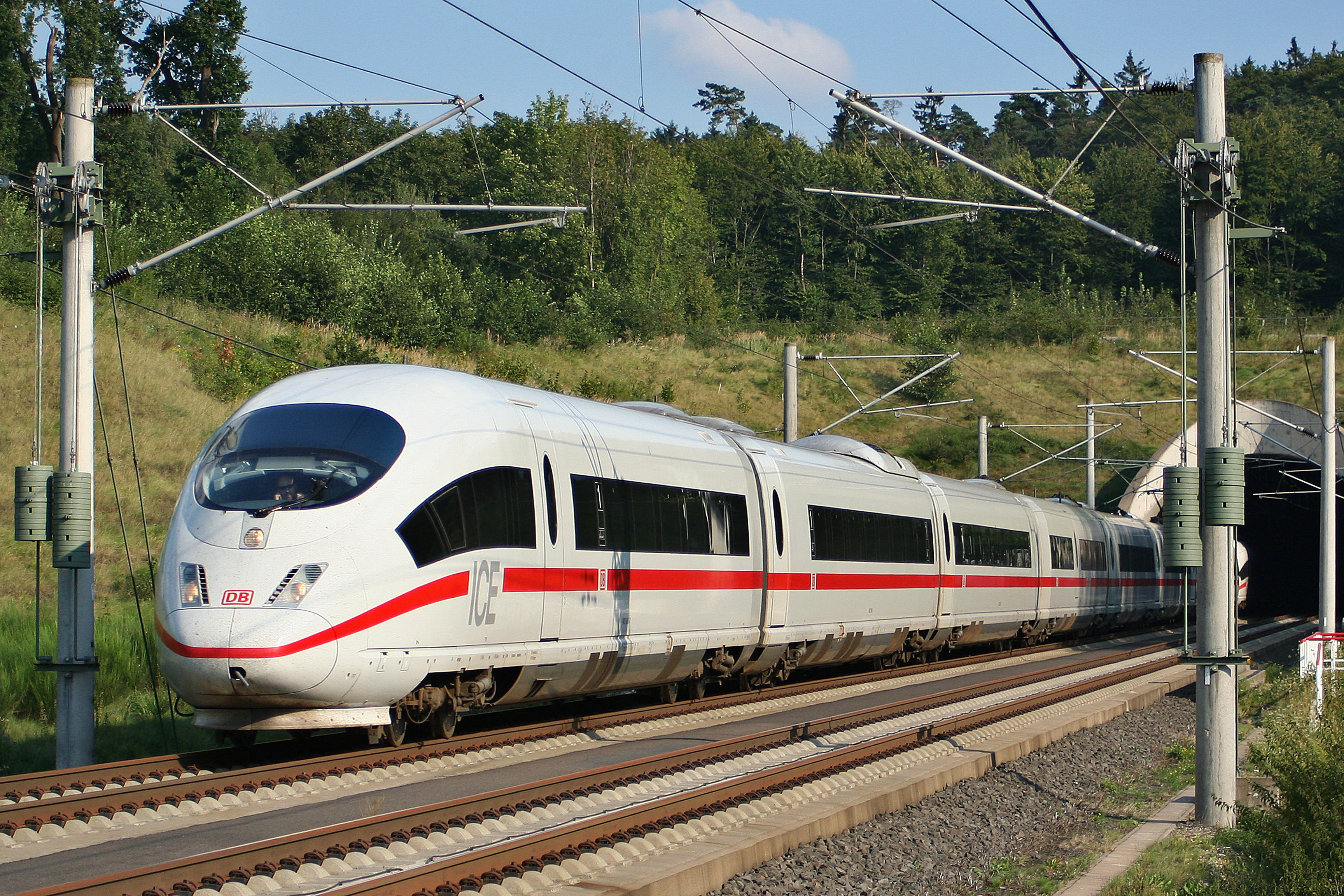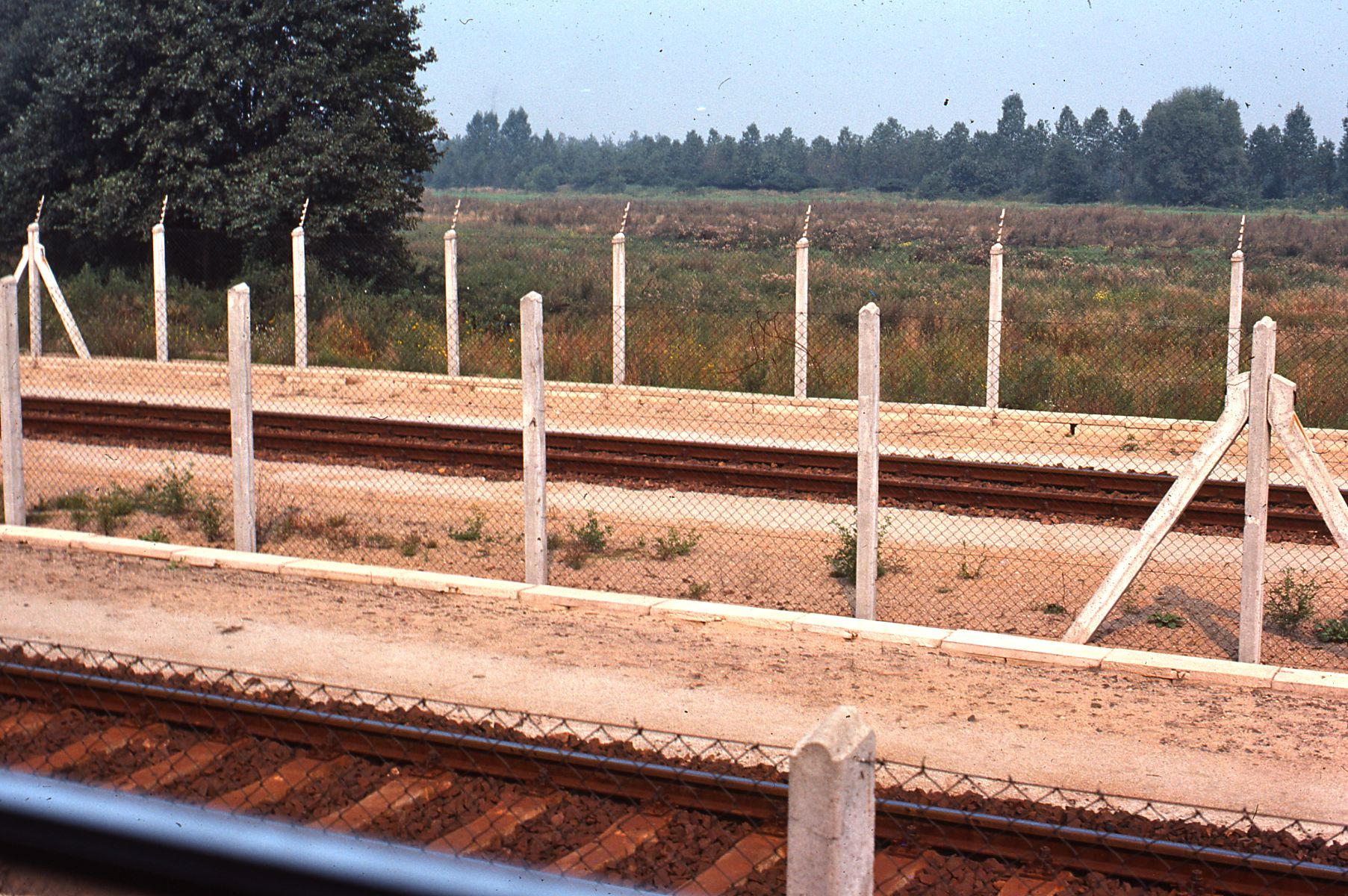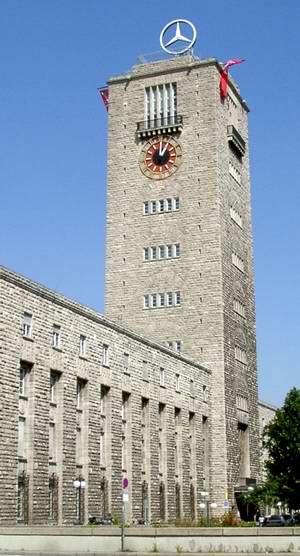|
Stuttgart-Zuffenhausen Station
Zuffenhausen station is a railway station of the Stuttgart S-Bahn in Zuffenhausen in the city of Stuttgart, in the German state of Baden-Württemberg. With its six platform tracks, it is one of the largest stations in Stuttgart. History Zuffenhausen station was opened by the Royal Württemberg State Railways on 15 October 1846. It was built as part of the Württemberg Central Railway, Central Railway (''Centralbahn'') between Stuttgart and Ludwigsburg station, Ludwigsburg and had a one-story station building. Apart from passengers from Zuffenhausen, it was used especially for travellers to the neighbouring village of Korntal-Münchingen, Korntal. In 1852 the State Railways, built a second track on the Northern Railway between Stuttgart and Bietigheim-Bissingen station, Bietigheim. From the early 1860s, the State Railways planned a line from Stuttgart to the Northern Black Forest. After long controversy over a route via Böblingen or via Zuffenhausen, the Württemberg parliament ( ... [...More Info...] [...Related Items...] OR: [Wikipedia] [Google] [Baidu] |
Zuffenhausen
Zuffenhausen is one of three northernmost boroughs of the city of Stuttgart, capital of the German state of Baden-Württemberg. The borough is primarily an incorporation of the formerly independent townships Zuffenhausen, Zazenhausen, Neuwirtshaus, and Rot, the latter is a historic town that gained importance in 1945 as a refugee camp for German refugees. As of 2009, around 35,000 people lived in Zuffenhausen's area of , making it the third largest of Stuttgart's outer boroughs. Zuffenhausen is also one of the oldest continuously inhabited places in Stuttgart with evidence of permanent settlements that can be traced back 7,500 years. The etymological roots of "Zuffenhausen" are assumed to be found in the name of a seventh century Alemanni settler "''Uffo''" or "''Offo''". The oldest known official denotation as a property of Bebenhausen Abbey by Pope Innocent III dates to May 18, 1204. Zuffenhausen was proclaimed a city in 1907, yet soon financially badly affected by the Great Depr ... [...More Info...] [...Related Items...] OR: [Wikipedia] [Google] [Baidu] |
Böblingen
Böblingen (; ) is a town in Baden-Württemberg, Germany, seat of Böblingen (district), Böblingen District. Sindelfingen and Böblingen are Geographic contiguity, contiguous. History Böblingen was founded by Count Wilhelm von Tübingen-Böblingen in 1253. Württemberg acquired the town in 1357, and on 12 May 1525 one of the bloodiest battles of the German Peasants' War took place in Böblingen. Jörg Truchsess von Waldburg attacked a force of 15,000 armed peasants; 3,000 were killed. By the end of the Thirty Years' War in 1648, the population of Böblingen had been reduced to 600. After the establishment of the Kingdom of Württemberg, Böblingen became the seat of an ''Oberamt'' (administrative unit) in 1818. The town was connected to the railroad network in 1879, allowing industrialization to take place. In the context of administrative reform in 1938, Böblingen ''Oberamt'' became Böblingen ''Landkreis'' (district). During World War I, an airbase was established. It ... [...More Info...] [...Related Items...] OR: [Wikipedia] [Google] [Baidu] |
Deutsche Bahn
(, ; abbreviated as DB or DB AG ) is the national railway company of Germany, and a state-owned enterprise under the control of the German government. Headquartered in the Bahntower in Berlin, it is a joint-stock company ( AG). DB was founded after the merger between Deutsche Bundesbahn and the East German Deutsche Reichsbahn in 1994 after the unification of Germany and has been operating ever since. is the second-largest transport company in Germany, after the German postal and logistics company / DHL. DB provides both long-distance and regional transport, serving around 132 million long distance passengers and 1.6 billion regional passengers in 2022. In 2022, DB transported 222 million tons of cargo. Company profile The group is divided into several companies, including '' DB Fernverkehr'' (long-distance passenger), '' DB Regio'' (local passenger services) and '' DB Cargo'' (rail freight). The Group subsidiary '' DB InfraGO'' also operates large parts of the German ... [...More Info...] [...Related Items...] OR: [Wikipedia] [Google] [Baidu] |
Weissach
Weissach is a municipality in the district of Böblingen in Baden-Württemberg in Germany. The Weissach axle is named after the town, where the research centre of Porsche is located. The Porsche 918 Spyder supercar A supercar, also known as an exotic car, is a street-legal sports car with race track-like power, speed, and handling, plus a certain subjective ''cachet'' linked to pedigree and/or exclusivity. The term 'supercar' is frequently used for th ... was developed in Weissach; Porsche offered an optional "Weissach package" that featured reduced weight and improved aerodynamics. Erich Hartmann (April 19, 1922, in Weissach – September 20, 1993, in Weil im Schönbuch) was a Luftwaffe pilot in World War 2. With 352 confirmed kills, he was the most successful fighter pilot in the history of air combat. Mayors * 1948–1972: Herrmann Kempf * 1973–1997: Wolfgang Lucas * 1997–2005: Roland Portmann * 2005–2006: Reinhard Riesch * 2006–2014: Ursula Kreutel * 2 ... [...More Info...] [...Related Items...] OR: [Wikipedia] [Google] [Baidu] |
Stuttgart-Feuerbach Station
Feuerbach station is an S-Bahn station in the Stuttgart borough of Feuerbach in the German state of Baden-Württemberg. It is on the Franconia Railway. The station is classified by Deutsche Bahn as a category 4 station and is classified as a ''haltepunkt'' (halt) because it now has no operable sets of points. History Feuerbach station was opened by the Royal Württemberg State Railways () along with the Central Railway (''Centralbahn'') from Stuttgart to Ludwigsburg on 15 October 1846. It is one of the oldest stations in Württemberg. At that time it was about a kilometre outside the village, along the road towards Cannstatt. The old one-story station building was erected about 200 metres from the Prag Tunnel. File:Bahnhof Stuttgart-Feuerbach Ende 19 Jhdt.png, Feuerbach station after reconstruction in 1871–1872 with the Prag Tunnel in the background File:Bahnhof Stuttgart-Feuerbach 1909.png, Station building from 1909, town side In 1852, a second track was completed on the ... [...More Info...] [...Related Items...] OR: [Wikipedia] [Google] [Baidu] |
World War II
World War II or the Second World War (1 September 1939 – 2 September 1945) was a World war, global conflict between two coalitions: the Allies of World War II, Allies and the Axis powers. World War II by country, Nearly all of the world's countries participated, with many nations mobilising all resources in pursuit of total war. Tanks in World War II, Tanks and Air warfare of World War II, aircraft played major roles, enabling the strategic bombing of cities and delivery of the Atomic bombings of Hiroshima and Nagasaki, first and only nuclear weapons ever used in war. World War II is the List of wars by death toll, deadliest conflict in history, causing World War II casualties, the death of 70 to 85 million people, more than half of whom were civilians. Millions died in genocides, including the Holocaust, and by massacres, starvation, and disease. After the Allied victory, Allied-occupied Germany, Germany, Allied-occupied Austria, Austria, Occupation of Japan, Japan, a ... [...More Info...] [...Related Items...] OR: [Wikipedia] [Google] [Baidu] |
Deutsche Bundesbahn
Deutsche Bundesbahn (, ) or DB () was formed as the state railway of the newly established West Germany (FRG) on 7 September 1949 as a successor of the Deutsche Reichsbahn-Gesellschaft (DRG). The DB remained the state railway of West Germany until after German reunification, when it was merged with the former East German Deutsche Reichsbahn (DR) to form Deutsche Bahn, which came into existence on 1 January 1994. Background After World War II, each of the military governments of the Allied Occupation Zones in Germany were ''de facto'' in charge of the German railways in their respective territories. On 10 October 1946, the railways in the British and American occupation zones formed the ''Deutsche Reichsbahn im Vereinigten Wirtschaftsgebiet'' (German Imperial Railway in the united economic area), while on 25 June 1947, the provinces under French occupation formed the Südwestdeutsche Eisenbahn. With the formation of the FRG these successor organisations of the DRG were ... [...More Info...] [...Related Items...] OR: [Wikipedia] [Google] [Baidu] |
Great Depression
The Great Depression was a severe global economic downturn from 1929 to 1939. The period was characterized by high rates of unemployment and poverty, drastic reductions in industrial production and international trade, and widespread bank and business failures around the world. The economic contagion began in 1929 in the United States, the largest economy in the world, with the devastating Wall Street stock market crash of October 1929 often considered the beginning of the Depression. Among the countries with the most unemployed were the U.S., the United Kingdom, and Weimar Republic, Germany. The Depression was preceded by a period of industrial growth and social development known as the "Roaring Twenties". Much of the profit generated by the boom was invested in speculation, such as on the stock market, contributing to growing Wealth inequality in the United States, wealth inequality. Banks were subject to laissez-faire, minimal regulation, resulting in loose lending and wides ... [...More Info...] [...Related Items...] OR: [Wikipedia] [Google] [Baidu] |
Kornwestheim Station
Kornwestheim station is located in the Ludwigsburg district of Kornwestheim in the German state of Baden-Württemberg. It is located on the Franconia Railway () and is a station on the network of the Stuttgart S-Bahn. It is near the junction of the Schuster Railway, Untertürkheim–Kornwestheim line (''Schusterbahn'') freight bypass. Kornwestheim passenger station was the site of a DB AutoZug, Deutsche Bahn car train loading facility until December 2007. History With the establishment of the Württemberg Central Railway, Central Railway (''Zentralbahn'') of Württemberg from Stuttgart to Ludwigsburg station, Ludwigsburg Kornwestheim also received a station. On 15 October 1846, the station was opened about a kilometre away from the village it served. At first passengers used the Seegasse (roughly today's Bahnhofstraße and Güterbahnhofstraße) to reach the station. Initially it had a one-storey station building, but another floor was added later. On the ground floor there was a ... [...More Info...] [...Related Items...] OR: [Wikipedia] [Google] [Baidu] |
Stuttgart Hauptbahnhof
Stuttgart Hauptbahnhof (; ) is the primary railway station in the city of Stuttgart, the state capital of Baden-Württemberg, in southwestern Germany. It is the largest regional and long-distance railway station in Stuttgart, the main node of the Stuttgart S-Bahn network, and, together with the station at Charlottenplatz, it is the main node of the Stuttgart Stadtbahn. Located at the northeastern end of the ''Königstraße'', the main pedestrian zone of the city centre, the main line station is a terminus, whilst the subterranean S-Bahn and Stadtbahn stations are through-stations. The station is well known for its 12-storey tower with a large, rotating and illuminated Mercedes-Benz star insignia on top; the tower and station building are city landmarks. Currently, as part of the Stuttgart 21 project, which is also very controversial among the population, the train station is being converted from an above-ground terminus station into an underground through station. These works i ... [...More Info...] [...Related Items...] OR: [Wikipedia] [Google] [Baidu] |
Ditzingen
Ditzingen (; Swabian German, Swabian: ''Ditzenge'') is a town in the Ludwigsburg (district), district of Ludwigsburg, Baden-Württemberg, Germany. It is located approximately 10 km northwest of Stuttgart, and 12 km southwest of Ludwigsburg. The Hirschlanden transmitter was located near Ditzingen-Hirschlanden. Ditzingen is the home of Bürger GmbH, Reclam and also Trumpf, Trumpf GmbH. Geography Geographic location Ditzingen is located in the southwestern Neckar basin in the Strohgäu at the transition to the so-called ''Long Field''. The urban area lies between the Strudelbach in the west and the Glems in the east. The Glems, a right tributary of the Enz River, flows through the center of Ditzingen. The city center is on the right of the river. The Glems formerly formed the tribal border of the Swabians and Franks and was also the border of the two dioceses Speyer, Roman Catholic Diocese of Speyer and Konstanz, Bishopric of Constance. Neighboring communities The ... [...More Info...] [...Related Items...] OR: [Wikipedia] [Google] [Baidu] |
Calw
Calw (; previously pronounced and sometimes spelled Kalb accordingly; ) is a Landstadt, town in the middle of Baden-Württemberg in the south of Germany, capital and largest town of the Calw (district), district Calw. It is located in the Northern Black Forest and is approximately south of Pforzheim and west of Stuttgart. It has the status of a ''große Kreisstadt.'' Geography Location Calw is located in the valley of the Nagold (river), Nagold in the Northern Black Forest at an altitude between above sea level. The historic centre lies west of the river. The newer parts of town have developed on the surrounding slopes. The following streams also exist within the town: the Tälesbach, Ziegelbach, Wurstbrunnenbach, Schießbach (Nagold), Schießbach, Schlittenbach und Schweinbach. In the northern part of the town, on the western slope of the Nagold valley is the cave known as the Bruderhöhle. Neighbouring Communities The following towns and communities (''Gemeinde (Germany), ... [...More Info...] [...Related Items...] OR: [Wikipedia] [Google] [Baidu] |









